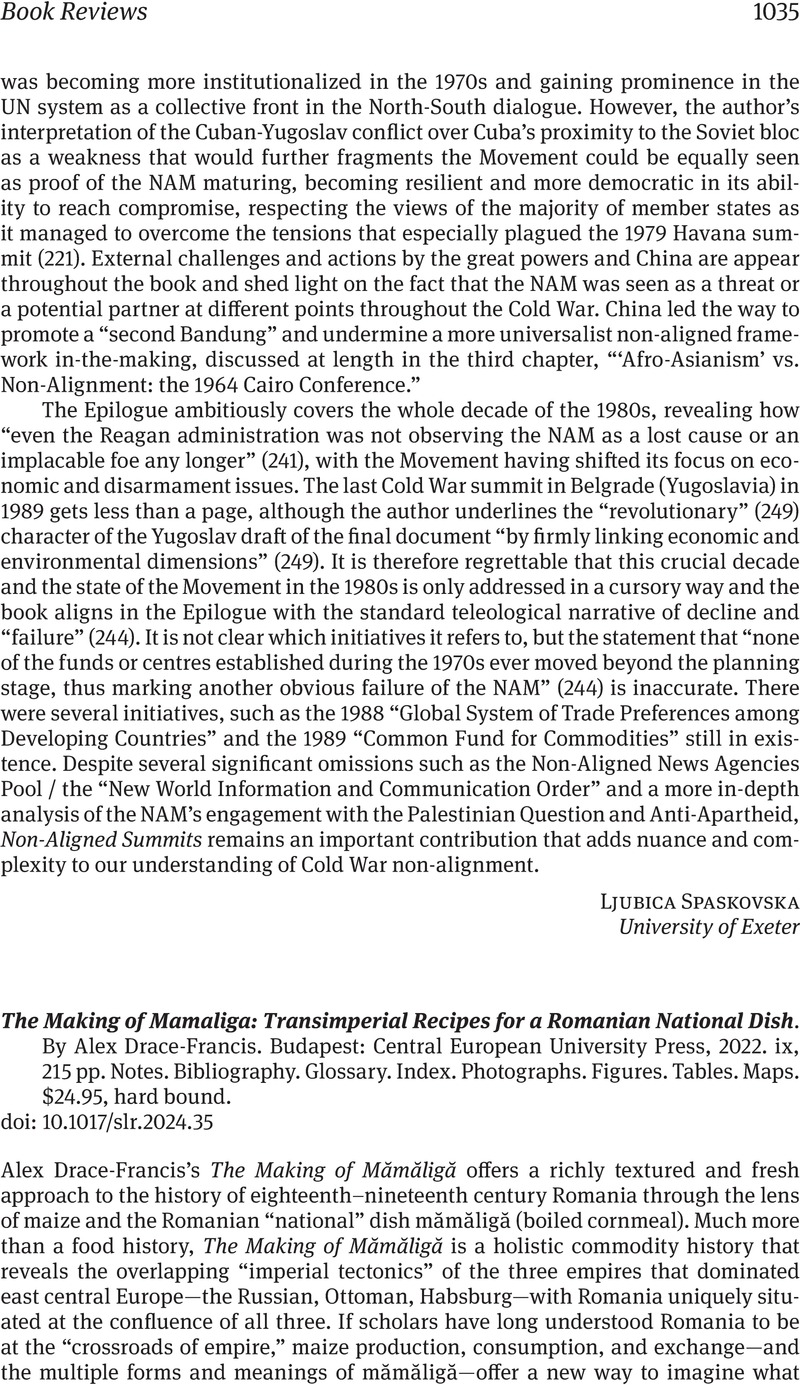No CrossRef data available.
Article contents
The Making of Mamaliga: Transimperial Recipes for a Romanian National Dish. By Alex Drace-Francis. Budapest: Central European University Press, 2022. ix, 215 pp. Notes. Bibliography. Glossary. Index. Photographs. Figures. Tables. Maps. $24.95, hard bound.
Review products
The Making of Mamaliga: Transimperial Recipes for a Romanian National Dish. By Alex Drace-Francis. Budapest: Central European University Press, 2022. ix, 215 pp. Notes. Bibliography. Glossary. Index. Photographs. Figures. Tables. Maps. $24.95, hard bound.
Published online by Cambridge University Press: 18 April 2024
Abstract
An abstract is not available for this content so a preview has been provided. Please use the Get access link above for information on how to access this content.

- Type
- Book Review
- Information
- Copyright
- Copyright © The Author(s), 2024. Published by Cambridge University Press on behalf of Association for Slavic, East European, and Eurasian Studies


